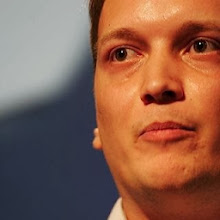(this is the second part in the "What happened on October 5th" miniseries, part one can be found here) In its Declaration on the Future of Serbia, adopted on July 30th 1999, Otpor advocated the strategy for transition of power through free and fair elections, with the idea of united front against Milosevic. Otpor also stressed the importance of mobilizing the population to vote, but also of promoting “individual resistance” i.e. nonviolent methods of civic disobedience in order to counter possible electoral fraud. This strategy was slowly embraced by the opposition parties in the months to come, but at the time nobody had taken it seriously.
The strategy was based on two assumptions:
- that the opposition had to be united, to have one presidential candidate in a run in order to get more votes than Milosevic
- that Milosevic would never accept the defeat at the elections (that he would falsify ballots and even use armed forces to defend his power)
The strategy was derived from a decision to use elections as a tool of change, since legitimacy of the opposition could only be established in the election process. Opposition needed to unite, to have one candidate in order to maximize its chances. Otpor and the resto of the civil society, on the other hand, would mobilize the population to “get out and vote” in order to raise voter turnout and opposition’s chances of victory.
Read more »

